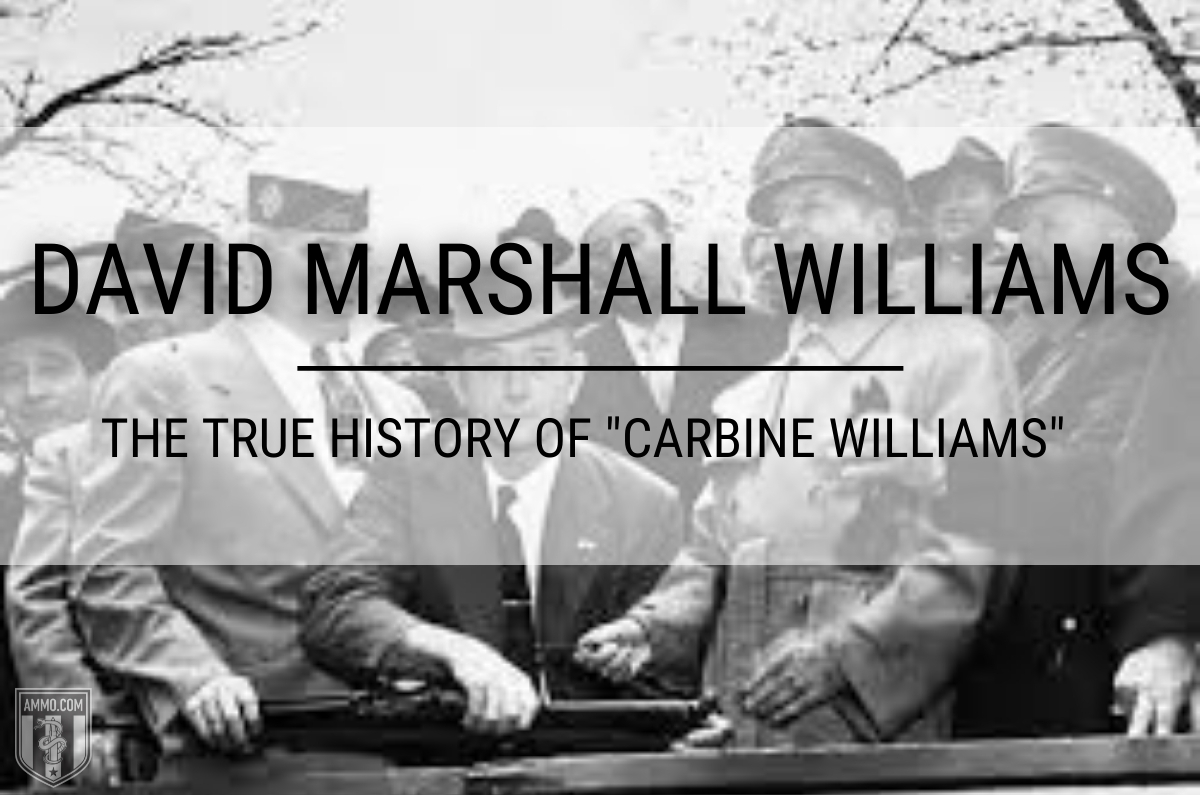
America loves an outlaw. Some outlaws simply need to find their calling, and David Marshall Williams is such a man.
A convicted murderer of a sheriff’s deputy, no less, he turned his prison experience into a tale of personal redemption and revolutionized the field of semi-automatic firearms for over a century.
Williams was one of a whopping 12 children born to James Claude Williams, a wealthy and highly influential landowner in Cumberland County, North Carolina. His early life is pure Americana: Expelled from school in eighth grade, he apprenticed underneath a blacksmith. Finding this life lacking in adventure, he lied about his age and enlisted in the United States Navy at 15.
He didn’t last long as a sailor, as the Navy quickly sussed out that he was too young for service. He enrolled in the Blackstone Military Academy where he was quickly expelled for theft of government property: several rifles and over 10,000 rounds of ammunition. The enterprising young Williams shipped the stocks to his home, refusing to return them.
In 1918 Williams married and settled down a little bit. He found work as a manual laborer with the Atlantic Coast Line Railroad, however, he didn’t last long there, either. He pulled a pistol, shot at a bird and succeeded only in earning a pink slip.
Finding that work-a-day life didn’t much suit him, Williams turned to the booming and lucrative trade of moonshining. July 22, 1921 would change Williams’ life forever.
On this day, Williams’ still was raided by local authorities under the command of the Cumberland County Sheriff. Like many moonshiners simply seeking to earn an honest living during the madness of national Prohibition, Williams defended his property and his livelihood with lethal force. While trying to escape, Deputy Sheriff Alfred Jackson Pate was shot twice. He died at the scene.
Williams curiously chose an insanity defense. His first trial for first degree murder ended in a hung jury, with one lone holdout maintaining that Williams was not fit to stand trial. Not wanting to stand trial a second time, Williams copped a plea for second degree murder and narrowly avoided the death penalty. It is lucky for firearms enthusiasts that he did. The Second Act of his life is one of both redemption and genius.
He later admitted to the charge again in court, defending one of his black still employees against charges of first degree murder. Williams received a sentence of 30 years hard labor, to be served at the Caledonia State Prison Farm in Halifax County, North Carolina.
But a man possessed of such genius as Williams would not be crushed under the weight of such a sentence. Indeed, this is where the coal of Williams’ early life turned into the diamond that would be the rest.
The prison’s superintendent quickly took note of the young Williams mechanical aptitude, putting him to work not breaking rocks, but in the machine shop. It was here that Williams demonstrated his toolmaking skills, fashioning what the prison needed, but did not have and could not afford to buy. Next, he began servicing the weapons used by the prison’s guards. It was here that he began to think about self-loading firearms and how he might make them better.
Williams quickly gained the prisoner’s ability to scrimp and save seemingly meaningless objects for future use. He spent his nights drawing up plans for how he might improve self-loading weaponry. His mother gifted him a drafting set, in addition to sending him paperwork to file for patents.
When all was said and done, Williams created four different semi-automatic rifles that would revolutionize the field. He did this by inventing the floating chamber and the short-stroke piston, both of which make modern semi-automatic weapons possible. The technicals details are complicated and, more to the point, irrelevant. The important part is that every semi-automatic weapon you own owes everything to two small but significant inventions made by a convicted murderer doing time.
You can view all of the original carbines handcrafted by Williams at the North Carolina Museum of History.
Continue reading David Marshall Williams: The True History of “Carbine Williams” at Ammo.com.
